While stuffed Americans put away the Thanksgiving leftovers and turn to the online Black Friday shopping ritual, houses of worship are hoping their members will drop by their websites as well.
As the year of COVID approaches its first end, church leaders are hoping congregants will remember the reason for the season — even if they have not been able to attend for nearly a year.
Distancing may be the norm for many, but pastors are hoping congregants will not distance themselves from their faith communities.
The jury is still out on a consensus if houses of worship will end the year financially in the black or the red. Pollsters are about as divided about the size of consumer’s pocketbooks this season as they were about their political convictions in the presidential election.
Churches and charities usually see a boost in giving in the waning weeks of the calendar as individuals catch up on delayed giving or increase their giving based on needed tax deductions.
According to a recent Gallup poll, Americans expect to spend an average $805 on Christmas gifts this year, down sharply from $942 last year and the lowest October spending estimate since 2016. Much of that drop can be attributed to life in a recession coupled with a pandemic.
But a New York Times poll suggests that some Americans are doing better than expected in today’s perilous times. However, those individuals appear to be tightening their belts for a different reason, delaying unnecessary large purchases, paying down debt and salting away more in their savings.
Church leaders see mixed bag
The reasons for the downturn in holiday spending may be different, pollsters say, but the net result is the same. Church leaders across the nation report much of the same mixed bag when it comes to questions of how they will end the year with just six weeks to go.
Many churches and charities usually see a boost in giving in the waning weeks of the calendar as individuals catch up on delayed giving or increase their giving based on needed tax deductions.
As a result, many pastors are cautious about unnecessary year-end spending and are hopeful the faithful stay connected with the mission of the church — especially when it comes to helping others in need in their communities.
‘Peering into the abyss’
In Bowling Green, Ky., Father John Thomas, pastor of Holy Spirit Catholic Church, remembers peering into the abyss in mid-March as the nation entered its national lockdown.
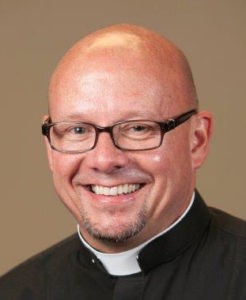
John Thomas
“The first few weeks of the pandemic were rather frightening, I have to admit,” he said in retrospect. Our current facility is only 10 years old with the normal amount of debt, and I was very concerned how we would pay the bills as our offerings continued to drop.
“I was expecting this to be very devastating, to be perfectly honest.”
But in time he noticed several families moved to online giving while others began sending checks through the mail. He was breathing easier even though he knew the congregation was not out of the woods.
“We had a good savings account to fall back on, but in a time like that you can never be sure if you have enough,” he added. Houses of worship closing their doors due to a pandemic was unheard of.
Before long he experienced some shifts in costs that other pastors noticed as well. Expenses were down due to buildings no longer in service, which allowed some funds to be shifted to providing enhanced streaming services. But the loss of incremental income from services like weddings also hit the bottom line, as well as closing day care or Christian schools.
“As the year has played out, we are still down but are far healthier than I ever expected we would be,” Father Thomas added.
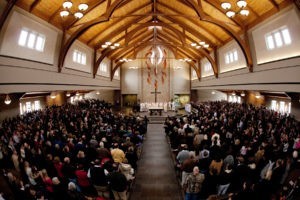
Holy Spirit Catholic Church at worship prior to the pandemic.
The congregation of Holy Spirit Catholic Church averages about 1,400 families who support a diverse set of ministries. There is a representation of young families and older adults; the area is culturally strong, serving as a refugee center with a large population of Burmese (now the country of Myanmar) and Congolese residents. The church offers Mass in both Burmese and Swahili.
“While collections are down, our people remain faithful. They know what they have is a gift from God and they want to share it with others in the community. For example, they have stepped up to financially support the number of needy coming to our Tuesday and Thursday food pantry, which has jumped from about 30 per day to just under 100 now,” he added.
Lesser income but changing costs as well
In Boise, Idaho, pastor Duane Anders of Cathedral of the Rockies, a United Methodist congregation, compares giving levels to those before and after the March shutdowns.

Duane Anders
“Prior to COVID, about 50% of our members gave online, which is not bad since we had to cease in-person worship. Still, that means that 50% were not,” he said.
There was a small drop, perhaps 10%, in giving early in the pandemic but levels shortly returned to normal. It helped that expenses were down due to less use of the building, resulting in lower wear and tear and utility costs; but some of that was offset with the hiring of a staffer who produced two different streaming services for a traditional and non-traditional audience.
Due to those changes Anders is optimistic the congregation, which averaged 1,400 in pre-COVID attendance, will end the year in the black. The church usually depends on 20% of its income being received in the last weeks of the year. And while weekly giving may not be quite where it was last year, the amount being channeled to ministry has increased.
“People have been very generous with our missional work, which focuses on three major ministries of hunger, housing and health. If we make a request to our congregation, people usually respond in a day or two — even in this economy. They are always happy to help someone else in need,” he explained.
For example, the church provides a hot meal to the needy four Sundays a month, distributes diapers with the help of bulk purchasing through the Idaho Diaper Bank, and provides personal hygiene kits to homeless teens or those living on the edges due to hard financial conditions at home.
Cathedral of the Rockies distributed about $30,000 in grocery gift cards, a ministry usually held between the Thanksgiving and Christmas seasons but which was launched in March. It also completed a Habitat house in the city.
And rather than taking the church on a mission trip to a Tijuana orphanage, the congregation sent about $15,000 to the ministry.
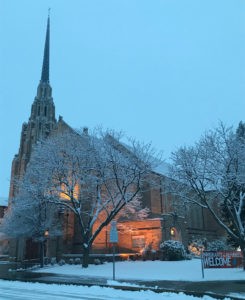
Cathedral of the Rockies
Yet the cessation of in-person worship does not mean the workload has decreased. Indeed, it has brought a new kind of stress to those in leadership.
“I have noticed a general weariness among pastors,” Anders said. “We originally thought this would be a month or six-week inconvenience but the goal posts keep getting moved. It may be another two or three months until we feel comfortable with the eventual possibility of an end in sight.”
When COVID began, Anders noted, his previous ministry delivery system disappeared — hospital visits, counseling, interacting with people at their point of need. But pastors reported being creative in making more social distancing “porch visits” to keep in touch and solicit prayer requests or needs and making more telephone calls to shut-ins. Such efforts supplement the impersonal nature of streaming or Zoom gatherings.
“Now on Sundays, our traditional biggest day of the week, it’s a camera and me — and an empty sanctuary. Pastors talk among themselves about what is the new normal and when will it return, and will we recognize it when it is here?” Anders mused.
Faithful in giving if not attendance
In Kentucky, Father Frank Ruff expresses appreciation to the government’s Paycheck Protection Program, which helped many Catholic parishes in the Owensboro Diocese make it through the dark days of the lockdown. However, that eight-week loan forgiveness program expired June 30 and congregations are now carrying the entire weight of funding personnel for their houses of worship.
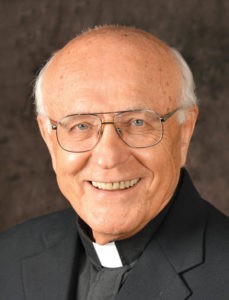
Frank Ruff
Ruff, who oversaw the Glenmary Home Missioners — a rural church planting arm of the Catholic Church — before retirement, said congregations are now allowed to gather with up to 50% occupancy. Those with health or other concerns are encouraged to remain home and stream services online.
Ruff reports that giving appears to be steady even though sanctuaries remain largely empty. That strange dichotomy bothers many of those priests with whom he talks.
“The conversation seems to be more concern about low attendance rather than on how the offerings are holding up,” he said from his home in Trenton, Ky. “Apparently parishioners are being faithful with their giving, even though many do not feel comfortable with attending indoor worship services.”
Facing down money and politics
Carson Reed consults with Churches of Christ throughout the nation as a vice president of church relations and a professor of practical theology at Abilene Christian University. From his perspective, he says about a third to half of churches are experiencing shortfalls of varying degrees but the remainder are holding their own.
Hopefully that bodes well for year-end giving.
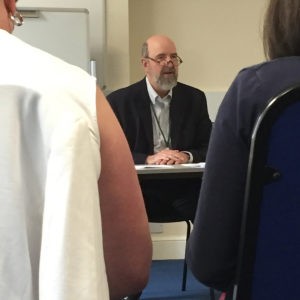
Carson Reed
“Churches with vulnerable populations are struggling financially as you might expect, such as those in the Texas oil culture. I know of one in a major Texas city that is vulnerable because of its dependency on oil and it’s far from a rural setting where the rigs are not pumping as much as they used to. So, it’s not just the small blue-collar churches that are impacted.”
But it’s more than the economy that is affecting some churches. Reed thought for a minute, then added a dimension not broached by others: some are struggling due to the infusion of secular politics into their fellowships.
“I know of instances where a good portion of the congregation left due to a variety of reasons such as differences of opinions of the election, the wearing of masks, and whether services should resume,” he explained. “Churches of Christ are fully autonomous, so there are strong differences of opinions on whether a congregation should follow local health ordinances of suspending indoor services or follow God’s direction. It’s not an easy decision for many.”
Those disagreements only serve to financially weaken congregations that already were struggling with a recession and pandemic fatigue.
A COVID-forced Reformation?
Anders, in Boise, sees the possibility of a silver lining to the pandemic.
“I think we are in a COVID-forced Reformation,” he said. “We would never have chosen to not hold indoor worship services for nearly a year or endure some of the other hardships we have endured, but in a crisis, you are forced to evaluate what is really important — when it is time to let go of some things and when to pick up others.”
“It’s strange to say, but we can be the church in greater ways than we ever imagined a year ago.”
He has been reminded that the church is not the building, and Zoom fellowship is not the church — but it’s better than nothing. He feels strongly that the church will emerge on the other side “stronger and more missional.”
“In our tradition, John Wesley said, ‘The world is our parish.’ In some sense now there is someone who is streaming one of our services in an untold number of states. We have people across Idaho who are engaging with us who live too far away to be a part of our immediate community, but we are there when they need us.
“It’s strange to say, but we can be the church in greater ways than we ever imagined a year ago.”
Father Thomas is equally optimistic that parishioners will emerge with a stronger sense of the calling of the church. While COVID has limited indoor gatherings for many events, parishioners will gather outdoors Dec. 12 for a massive fireworks display celebrating the sesquicentennial anniversary of a half-century of ministry of the parish.
The Golden Jubilee will serve to thank God and, indirectly, serve as a testimony to their faithfulness in being His hands and feet in one of the most trying years in memory.
Related articles:
Majority of churches plan flat budgets for 2021, large survey finds
As major employers, churches help the economy with PPP loans
Congregations on mission and online doing better financially amid COVID

